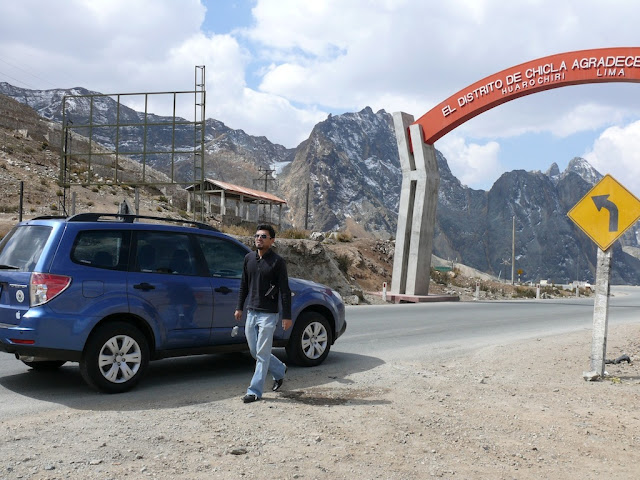New findings in Huarmey concerning Wari culture: 1200 gold and silver objects and 63 mummies.
New findings in Huarmey concerning Wari culture: 1200 gold and silver objects and 63 mummies.

Foto by : Juan Ponce
The burial chamber was found by a group of Polish and Peruvian Archaeologists, four hours North from Lima.
The Tomb Robbers were never able to dig up this tomb. Ingeniously, the subjects of the Wari lords shielded with a layer of 33 tons of gravel and therefore the tomb remained intact for about 1,200 years.
Since a couple of years ago, a group of Polish researchers began to uncover the secret that kept a burial chamber of the Wari culture, which could solve various questions about the influence during the Middle Horizon era which was ruled by the Moche Empire and other north coast civilisations.
Milosz Giersz, director of the archaeological project, and his wife Patrycja Przadka-Giersz Warsaw University and Peruvian colleagues, Krzysztof Makowski and Roberto Pimentel of the Pontifical Catholic University of Peru, in October 2010 had already discovered two funerary contexts in a place known as the Castle, near Huarmey. At that time, they found important evidence but were disappointed due to the reason that looters had severely damaged the site, losing valuable information.
Their ten years of experience in the area were hinted the to continue investigating even though the results were not entirely satisfactory. On 1 September 2012, with the support of the University of Warsaw and the National Science Centre of the Polish Government decided to dig through the rubble that remained at the top of a step pyramid 20 meters high, located just over one kilometer from the city.
Inspired by the fine red plastered adobe walls without high expectations, because for decades much of the monument had been destroyed by illegal treasure-seekers scientists began to dig in the center of an adobe structure that archaeologists recognised and Peruvians believed it belonged to the Moche culture.
On 28 September the same year, when they started to clean the wells used by the looters, amid triangular bricks, something caught their eye. In the layer of small stones (gravel), the bottom of the wells, fly pupae appeared, a sign that hinted to a deep organic material.
Giersz was completely surprised and ordered the removal of debris that formed a layer of about 100 centimeters and total weight was about 33 tons. While this material was removed, there appeared a wooden club, more than a meter long, inlaid with copper, in the middle of what turned out to be a burial chamber of singular value and richness of offerings.
Under the seal of gravel, researchers found six human skeletons which were placed on mummies of women, for offerings to the wari lineage.
ELITE WOMEN
A week after an event occurred that was not in the plans of the team of scientists. After removing the seven human sacrifices, appeared the burial chamber containing a rich dowry unprecedented in Peruvian culture. They were facing a great find, which had to work in secret to avoid the evil presence of the tomb robbers.
After a month of careful photographic record, drawing and analysis of the skeletons, the project bioarchaeologist confirmed that the burial chamber (4.50 meters long, 3.50 wide and 1.50 deep) had buried 57 funerary bales in which each mommy was in sitting possition, as is customary in the andean mountains.
On the north side of the same chamber there were three small graves which correspond to wari queens or princesses. They all were found with priceless jewels, but in the center would house a lady of greater importance than all the others. Made up of three ladies, perhaps the principal wives were buried with other noble ladies, perhaps secondary wives or members of the court.
When analyzing the findings, Dr. Przadka-Giersz concluded that all women were buried with jewels they used in life as gold and silver earrings, fine ceramics. Each of them had a basket in which kept several pairs of extra ear and sacred objects that identify them as part of the nobility.
The search conducted by the research team revealed that in the burial chamber in the Huarmey Castle 1,200 objects were discovered, including gold and silver earrings, similar but different metal alloys, ceramic bottles of extraordinary artistic beauty, pots, pitchers , bowls, about 300 piruros (some gold and silver) kero Huamanga stone, needles, balls of colors, ceremonial knives and other ornaments in the style of the culture that was centered in Ayacucho. All these objects will be preserved by specialists and then exposed to the general public, thanks to the sponsorship of a mining company and the collaboration of the Museum of Art of Lima as well as the support of the Ministry of Culture.
For further inquiries concerning the destination Peru as well as special tour packages, pls contact us under following link: http://www.peru4x4adventures.com/contact-us or visit http://www.peru4x4adventures.com















Comentarios
Publicar un comentario